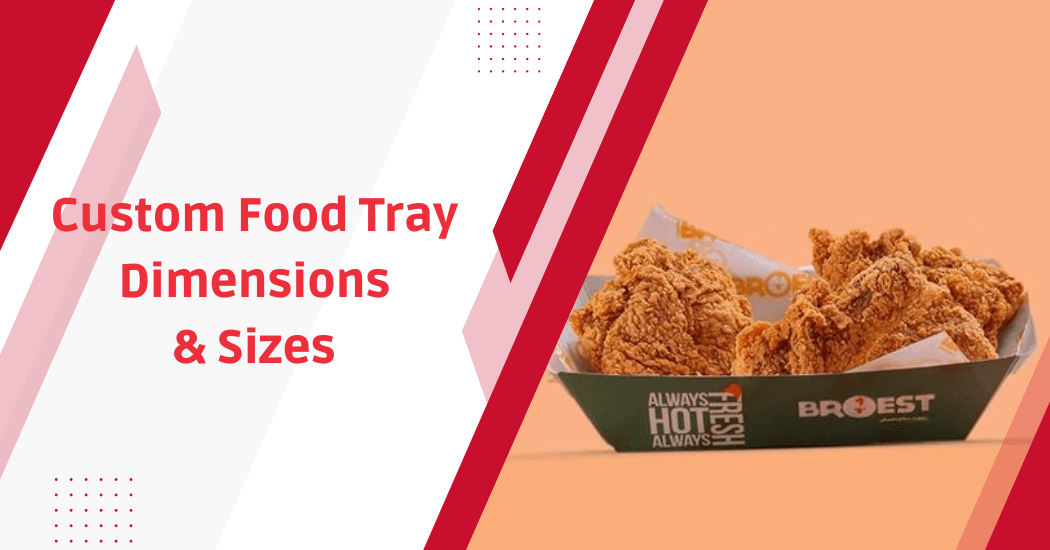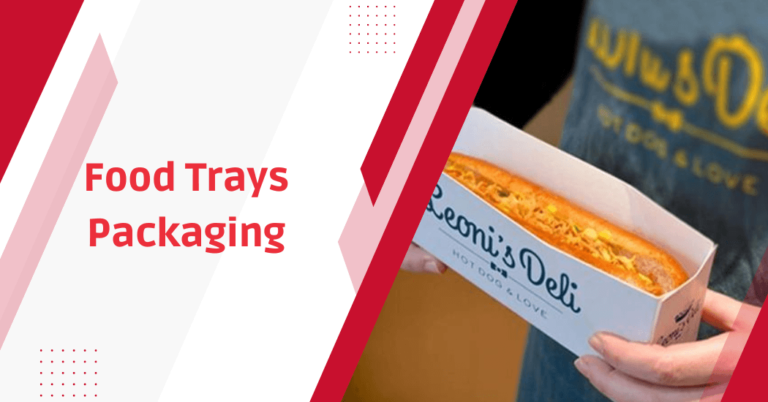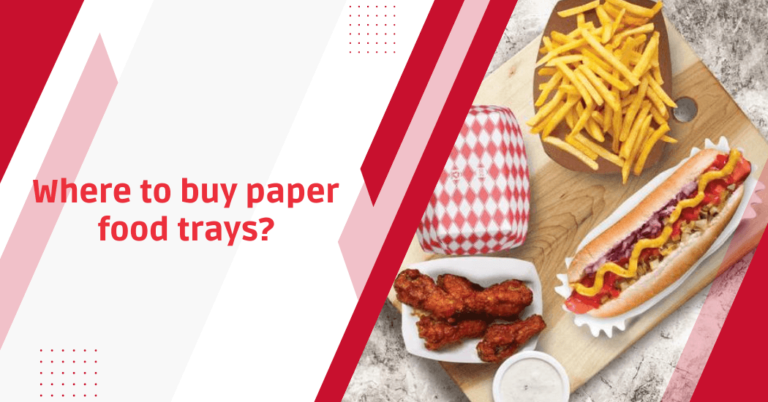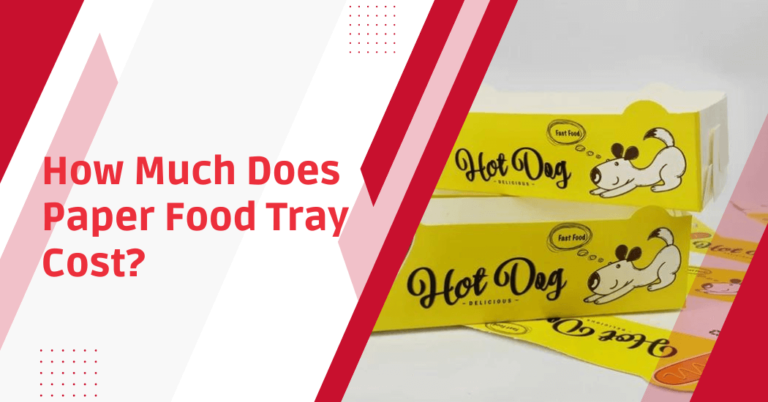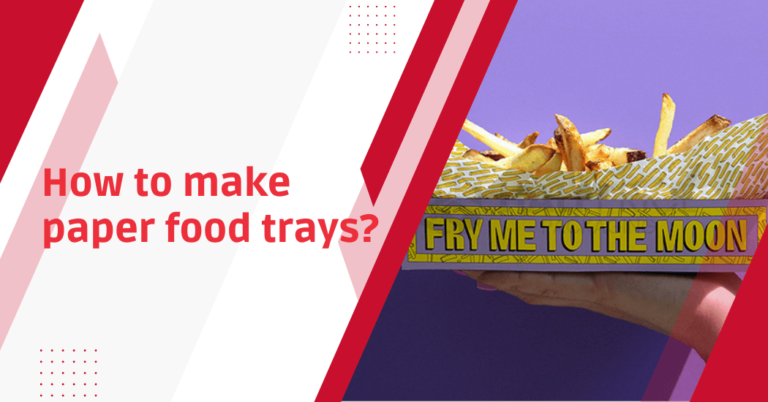Food Tray Dimensions & Sizes | Guide For Catering & Events
When it comes to serving food at events, festivals or even in everyday settings like food courts and fast-food restaurants, paper food trays play a crucial role. These trays provide a convenient and eco-friendly solution for serving a variety of foods, from snacks to full meals.
However, ensuring that these trays are appropriately sized for their intended purpose is essential for both practicality and customer satisfaction.
In this discussion, we delve into the dimensions of paper food trays, exploring their varying sizes, shapes and their suitability for different types of food service environments.
Understanding these dimensions is key to optimizing the efficiency and functionality of paper food trays in various culinary settings.
Paper Food Tray Dimensions
Paper food trays come in a range of sizes to accommodate different types of foods and serving sizes.
Below is a detailed table that outlines some common dimensions of paper food trays and their typical uses in various food service settings:
| Dimensions (L x W x H) | Typical Use | Description |
|---|---|---|
| 4″ x 6″ x 1″ | Snacks and side dishes | Ideal for serving small snacks like fries, nuggets or small pastries. |
| 5″ x 7″ x 1.5″ | Individual Portions/Fast Foods | Suitable for burgers, sandwiches or a combo of side dishes. |
| 6″ x 8″ x 2″ | Full Meal Service | Can accommodate a full meal, including a main dish and two sides. |
| 8″ x 10″ x 2.5″ | Group/Family Portions | Designed for larger servings, ideal for family or group meals. |
| 10″ x 12″ x 3″ | Catering and Large Events | Best for catering large events, capable of serving varied and larger dishes. |
| 14″ x 18″ x 3.5″ | Bulk Food Service | Suitable for bulk food items, such as French fries or chips. |
Types of paper food trays and their dimensions
Apart from different sizes, paper food trays also come in various shapes and styles to suit different food service environments.
Below are some common types of paper food trays and their dimensions:
- Rectangular trays: These are the most commonly used type of paper food tray and usually come in sizes ranging from 4″ x 6″ to 14″ x 18″. They are suitable for serving a wide variety of foods, from snacks to full meals.
- Boat trays: Shaped like a boat, these trays are ideal for serving fried or saucy foods that need to be contained in a specific area. They typically come in sizes ranging from 5″ x 7″ to 10″ x 12″.
- Compartment trays: Also known as lunch trays, these are designed with separate compartments to keep different foods from mixing. They come in sizes ranging from 8″ x 10″ to 14″ x 18″.
- Oval trays: These trays have a unique oval shape and are ideal for serving pizzas, tacos and other similar items. They typically come in sizes ranging from 6″ x 8″ to 12″ x 14″.
- French fry trays: As the name suggests, these trays are specifically designed for serving French fries and other finger foods. They usually come in sizes ranging from 4″ x 6″ to 10″ x 12″.
- Portion cups: These are small paper containers with lids, perfect for serving sauces, dips and condiments. They typically come in sizes ranging from 2 oz to 6 oz.
Factors affecting paper food tray dimensions
The dimensions of paper food trays are primarily influenced by the type of food being served, portion sizes, presentation requirements and environmental considerations.
1) Type of food being served
The size and shape of a paper food tray depend significantly on the type of food it is intended to hold. For example, a tray designed for serving snacks like fries or nuggets will be smaller than a tray designed for serving a full meal. Similarly, trays used for containing saucy foods may have taller sides to prevent spills.
2) Serving portion sizes
The portion sizes of the food being served also play a crucial role in determining paper food tray dimensions. A larger portion will require a bigger and deeper tray to hold it without spilling or overflowing. In contrast, a smaller portion may not require as much space.
3) Presentation requirements
Some food service settings may have specific presentation requirements that need to be considered when selecting the appropriate paper tray dimensions.
For example, catering events may require trays with larger surface areas to allow for creative plating and display of different dishes.
4) Environmental considerations
In recent years, there has been a growing concern for the environment, leading to an increase in the use of sustainable and eco-friendly packaging.
This shift may also influence paper food tray dimensions as companies attempt to reduce waste and limit their environmental impact by using smaller and more compact trays.
How to choosing the right size food tray?
Choosing the right dimensions for paper food trays involves careful consideration of several key factors to ensure both operational efficiency and customer satisfaction in food service environments.
These considerations include:
- Type of food being served: Size and shape of the food items significantly influence the choice of tray dimensions. For instance, larger trays are necessary for full meals, while smaller, compartmentalized trays may be better suited for snacks and side dishes.
- Serving size: The intended portion size also dictates the required tray dimensions. Catering and bulk food service settings might necessitate larger trays to accommodate generous portion sizes intended for groups or families.
- Presentation: Visual presentation of food can enhance the dining experience. The right tray dimensions should allow for the food to be displayed attractively without looking overcrowded or sparse.
- Environment and purpose: Setting in which the food will be served matters. For fast-food restaurants and food courts, efficiency and the ability to handle quick transactions might prioritize certain tray dimensions. In contrast, events and catering might focus on aesthetics and the ability to serve a variety of foods together.
- Customer convenience: Consideration should be given to the ease with which customers can hold and carry the trays, especially in fast-food or self-serve environments. Trays should be large enough to securely hold the food but not overly cumbersome for customers to maneuver.
- Sustainability: With growing environmental concerns, the sustainability of paper food trays is also an important consideration. Efficient use of materials without compromising on functionality can influence the choice of tray dimensions, favoring options that minimize waste.
- Cost-Effectiveness: Finally, the cost implications of different sizes and shapes of trays cannot be overlooked. Larger trays require more material and may be more costly, so finding a balance between size and cost efficiency is crucial for businesses to manage expenses.
FAQs | Food Tray Dimensions
How does the type of food affect the dimensions of paper food trays?
Food type influences tray dimension because different foods have varying space and containment needs. For instance, liquid or saucy foods might require deeper trays with higher sides.
Are there standard sizes for paper food trays?
Yes, paper food trays often come in standard sizes ranging from small for snacks and condiments to large for full meals, though the exact dimensions can vary by manufacturer and intended use.
Can the choice of paper food tray dimensions affect the cost?
Yes, larger trays require more material, which can increase costs. It’s important to balance the need for appropriate size with cost efficiency.
Is it possible to custom-order paper food trays with specific dimensions for unique needs?
Many manufacturers offer custom sizing options for businesses with specific needs, allowing for personalized solutions based on the type of food, serving size and branding requirements.
What is the capacity of paper food trays in terms of food volume?
Capacity varies depending on the dimensions of the tray. Typically, small trays can hold around 8-10 ounces of food, medium trays around 16-20 ounces and large trays around 24-32 ounces.
Where can I find information about the dimensions of specific paper food trays?
You can usually find information about the dimensions of paper food trays on the packaging or product description provided by the manufacturer. Additionally, you may contact the manufacturer directly for more detailed specifications.
Wrap Up
The dimensions of paper food trays are determined by a complex interplay of factors including the type of food being served, serving portion sizes, presentation requirements, environmental considerations, customer convenience and cost-effectiveness.
Choosing the right size and shape of trays is critical for ensuring operational efficiency, enhancing the dining experience and meeting sustainability goals.
By carefully evaluating these factors, businesses can make informed decisions that not only cater to the practical needs of serving and packaging food but also align with broader environmental and economic objectives.
The diversity in tray dimensions highlights the versatility and adaptability of paper food trays to various food service contexts, making them an indispensable element in today’s food industry.
